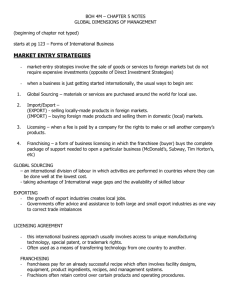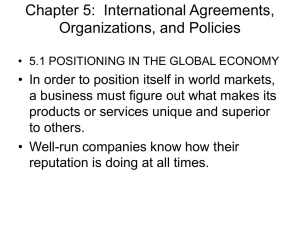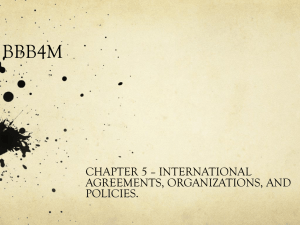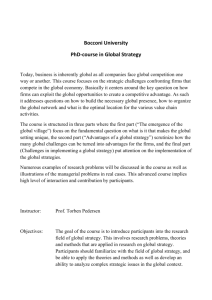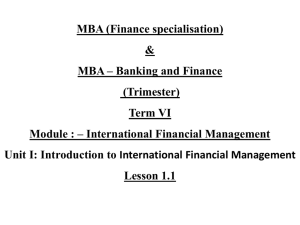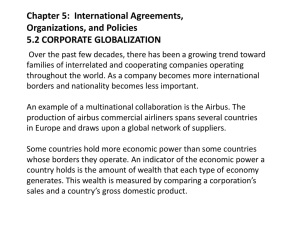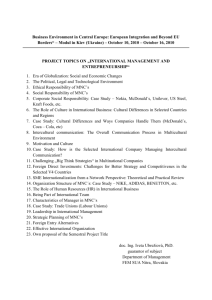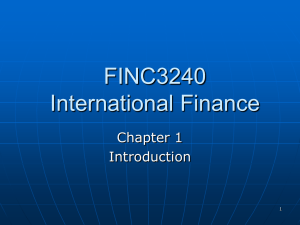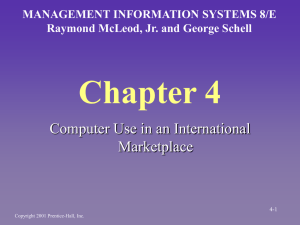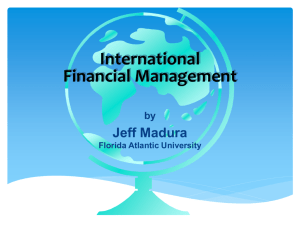Tasks MGMT GLOBAL CONTXT PRESENTATIONS 2015
advertisement
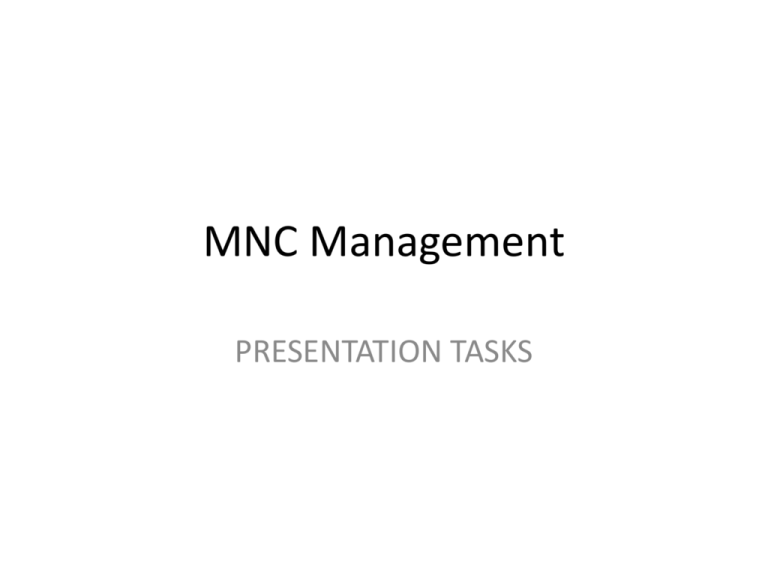
MNC Management PRESENTATION TASKS Multinational Management Session 2 27th January 2015 Session 2 Strategic Management & Structure Group presentations: GROUP 1. Based on Akoorie and Scott-Kennel (2005) Chapter 9, Table 9.1: Objective: We are building a consulting concept for our newly founded consulting firm. Our mission is to use and build on sound scholarly work to provide our clients with the best available tools to generate business-level international strategy. Make an expert selection of theoretical concepts and frameworks (use table 9.1 as guide), introduce them briefly, state your motivation for selection and show us an integrated framework that can be applied for internationally active firms. Multinational Management Session 2 Strategic Management & Structure Session 2 th 27 January 2015 GROUP 2. You are the new managing team of Nestlé. The supervisory board of the corporation gives you the mandate to transform the company from a multi-domestic firm into a transnational corporation. Introduce your management of change concept leaning on Bartlett & Ghoshal’s Global Integration and Local Responsiveness Organising Framework. Put special emphasis on (a) standardisation gains; (b) local adaptation; (c) synergies in purchasing, production, R&D and marketing; (d) control and coordination of these operations; (e) configuration of activities; and (f) a view of the overall organisational structure after implementation. Wrap all of these into a winning presentation to the board to get their approval. Multinational Management Session 3 Entry Mode Choices Session 3 th 29 January, 2015 GROUP 3. Introduce Sharma & Erramilli (2004) resource-based explanation of entry mode choice. What is the basis of the argument that their explanation is newer, better, theoretically more sound and managerially more useful? How does this resource-based contribution to the decision augment the behavioural, market-imperfection and market failure approaches that dominate this type of literature? How can this knowledge be made useful for managers specifically? Develop a suggestion. Multinational Management Session 3 Session 3 Entry Mode Choices 29th of January, 2015 GROUP 4. Introduce the framework and findings of Ekeledo & Sivakumar (2004). Evaluate their resource-based approach to entry mode selection and contrast it to a market failure approach (Internalisation, Eclectic Theory). From this evaluation, create a practical tool that managers of a MNC in a specific context (if you need to choose, then choose industry, size, degree of internationalisation, concrete firm example, country market etc) could realistically apply to make more advanced market entry mode decisions. Defend your decision making tool. Multinational Management Session 4 Session 4 Knowledge in the MNC February 5th, 2015 GROUP 5. Analyse Kogut & Zander’s (1993,2003) seminal article on the knowledge of the firm in an evolutionary theory of the MNC. How does their view challenge the common market failure/imperfection paradigms? What are their conclusions concerning the view that knowledge is a public good for which no markets may exist? How do they explain the implications of tacit knowledge for the theory of the firm without appealing to transaction costs and opportunism? How does the theory explain that firms may extend their operations beyond their strict advantage? Multinational Management Session 4 Knowledge in the MNC Session th4 February 5 , 2015 GROUP 6. Analyse and introduce Eisenhardt & Martin (2000) key considerations on Dynamic Capabilities. What are they? Review Augier & Teece (2009) and investigate what is the manager’s role in the dynamic capabilities of organizations. Provide your synthesis in order to make practical managerial suggestions how a company may use this knowledge in its own pursue to stay relevant. Multinational Management Session 5 Session 5 February 10th Managing MNCs and Subsidiary Roles GROUP 7. Introduce Andersson & Forsgren‘s(2000) concept toward a subsidiary ‘centre of excellence’ theory. Evaluate the statement (p. 342) ‘As the development of the MNC, in turn, is rooted in the development of its subsidiaries, the MNC headquarters need knowledge about the subsidiaries’ networks if it want to control the development of the MNC’. Discuss the statement (p. 343) ‘[...] the more externally embedded a subsidiary is the harder it is for the headquarters to compete with the external network actors in influencing the subsidiary’s operations and activities’. Critique the findings and present what implications you see for HQ managers and from subsidiary managers’ perspective. Multinational Management Session 5 Session 5 February 10th Managing the Networked MNC: External GROUP 8. Introduce Luo’s (2005) integrated model of inter-unit coopetition within an MNE. What are the conceptual bases of this model? How does this model contribute to understanding of Transnational firms and the management of those? Based on ideas from this article: Develop a practical management tool for an MNC with the purpose to develop structural solutions for a transnational strategy. Multinational Management Managing Uncertainties Session 6 Session 6 February 12th Managerial and Entrepreneurial Actors GROUP 9. Read Wiltbank et al. (2006) and present the different archetypes discussed in the prediction/control framework. How do they differentiate our views on strategy? What different behaviours are assumed by these different types? What are the consequences in strategy, organisational structure and processes between these types? Draw on understanding the framework and develop a consulting concept that would allow MNCs to utilise important insights of the framework in order to balance ‘exploitation of given’ with ‘exploration of new knowledge’ – in reference to March’s (1991) seminal article. Multinational Management Managing Change Session 6 Session 6 February 12th Managerial and Entrepreneurial Actors GROUP 10. Review literature on ‘Change Management’. What are the most common themes, challenges and solutions found in different approaches to managing change? How does this ‘practice oriented literature’ compare with the ideas by Farjoun (2010) who sees stability and change as a duality, making them interdependent and reciprocally necessary. Drawing on your evaluation build a synthesis of approaches that a CEO could introduce in order to facilitate major strategic change being accepted and implemented in their firms. Use an existing example or develop your own to illustrate how your model would function in a given setting.
